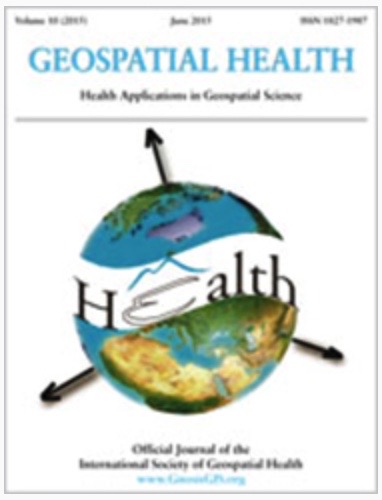To what extent does climate explain variations in reported malaria cases in early 20th century Uganda?

Published: 31 March 2016
Abstract Views: 3772
PDF: 1067
Appendix: 438
HTML: 1209
Appendix: 438
HTML: 1209
Publisher's note
All claims expressed in this article are solely those of the authors and do not necessarily represent those of their affiliated organizations, or those of the publisher, the editors and the reviewers. Any product that may be evaluated in this article or claim that may be made by its manufacturer is not guaranteed or endorsed by the publisher.
All claims expressed in this article are solely those of the authors and do not necessarily represent those of their affiliated organizations, or those of the publisher, the editors and the reviewers. Any product that may be evaluated in this article or claim that may be made by its manufacturer is not guaranteed or endorsed by the publisher.
Similar Articles
- Peter Nezval, Takeshi Shirabe, Design and implementation of a spatial database for analysis of wheelchair accessibility , Geospatial Health: Vol. 20 No. 1 (2025)
- Ana M. Vicedo-Cabrera, Annibale Biggeri, Laura Grisotto, Fabio Barbone, Dolores Catelan, A Bayesian kriging model for estimating residential exposure to air pollution of children living in a high-risk area in Italy , Geospatial Health: Vol. 8 No. 1 (2013)
- Rebeca Ramis, Diana Gomez-Barroso, Gonzalo Lòpez-Abente, Cluster detection of diseases in heterogeneous populations: an alternative to scan methods , Geospatial Health: Vol. 8 No. 2 (2014)
- Noraishah M. Sham, Isthrinayagy Krishnarajah, Noor Akma Ibrahim, Munn-Sann Lye, Temporal and spatial mapping of hand, foot and mouth disease in Sarawak, Malaysia , Geospatial Health: Vol. 8 No. 2 (2014)
- Beatriz Martínez-Lòpez, Tsviatko Alexandrov, Lina Mur, Fernando Sánchez-Vizcaíno, José M. Sánchez-Vizcaíno, Evaluation of the spatial patterns and risk factors, including backyard pigs, for classical swine fever occurrence in Bulgaria using a Bayesian model , Geospatial Health: Vol. 8 No. 2 (2014)
- Hassan M. Khormi, Lalit Kumar, Climate change and the potential global distribution of Aedes aegypti: spatial modelling using geographical information system and CLIMEX , Geospatial Health: Vol. 8 No. 2 (2014)
- Cristina Ballart, Irene Guerrero, Xavier Castells, Sergio Baròn, Soledad Castillejo, M. Magdalena Alcover, Montserrat Portús, Montserrat Gállego, Importance of individual analysis of environmental and climatic factors affecting the density of Leishmania vectors living in the same geographical area: the example of Phlebotomus ariasi and P. perniciosus in northeast Spain , Geospatial Health: Vol. 8 No. 2 (2014)
- Kiran Afshan, Cesar A. Fortes-Lima, Patricio Artigas, M. Adela Valero, Mazhar Qayyum, Santiago Mas-Coma, Impact of climate change and man-made irrigation systems on the transmission risk, long-term trend and seasonality of human and animal fascioliasis in Pakistan , Geospatial Health: Vol. 8 No. 2 (2014)
- Luis E. Escobar, Andrés Lira-Noriega, Gonzalo Medina-Vogel, A. Townsend Peterson, Potential for spread of the white-nose fungus (Pseudogymnoascus destructans) in the Americas: use of Maxent and NicheA to assure strict model transference , Geospatial Health: Vol. 9 No. 1 (2014)
- Mohammadreza Rajabi, Ali Mansourian, Petter Pilesjö, Ahad Bazmani, Environmental modelling of visceral leishmaniasis by susceptibility-mapping using neural networks: a case study in north-western Iran , Geospatial Health: Vol. 9 No. 1 (2014)
You may also start an advanced similarity search for this article.











